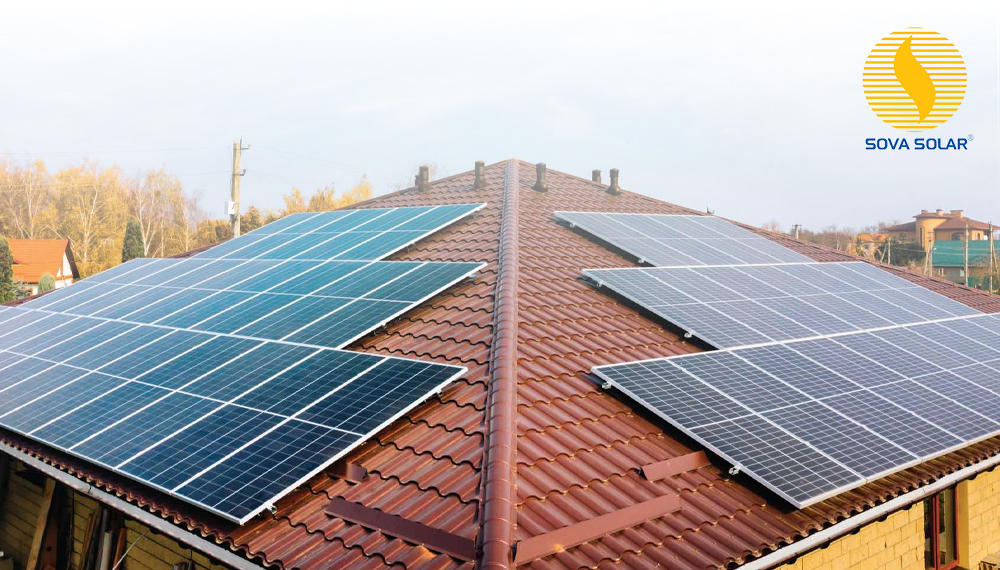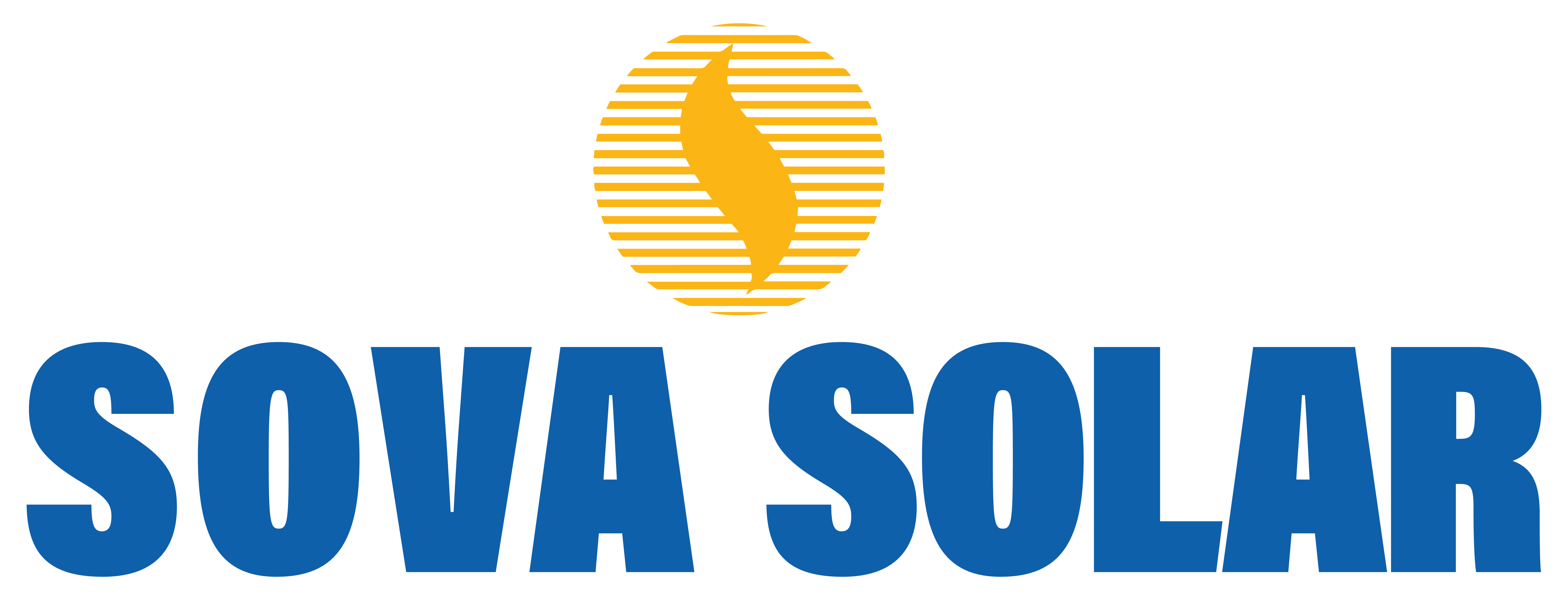
- sovasolar_admin
- Aug 31, 2024
- Uncategorized
- 0 Comments
Not only is harnessing the sun’s energy a prudent approach to lower your energy expenses, but it’s also a big step toward a more environmentally friendly world. With solar energy, you have a great chance to use sustainable energy sources and reduce your carbon footprint. But to properly utilize this potential, you must set your solar panels correctly.
Think of your solar panels as sophisticated sun collectors that need to be oriented and tilted just to operate as efficiently as possible. Not only is the positioning of solar panels crucial, but it also significantly affects their efficiency. Think of it like tuning a musical instrument: small changes can result in big differences in sound quality.
This guide aims to provide an answer to the location conundrum of solar panels. We’ll examine how solar panel energy-generating capability is affected by angle, orientation, and surrounding environment.
Comprehending Solar Panel Performance
The quantity of sunlight your solar panels can absorb and convert to energy is directly tied to their efficiency. The panels’ direction and angle, among other things, have a big impact on how efficient they are. The optimization of energy output necessitates proper alignment. Here is a detailed explanation of the importance of solar panel placement:
1. Improving Solar Absorption
Solar panels operate much more efficiently when they are positioned to receive as much direct sunlight as possible. When panels are aligned correctly to face the sun, they optimize the amount of solar radiation that reaches the surface and absorb solar energy. Because of their perfect arrangement, the panels can produce more electricity.
2. Extended Sunlight Exposure
If your solar panels are angled correctly, especially during the hours of the day when sunlight is greatest, they can capture sunlight for longer periods. This extended exposure is crucial since it increases the amount of solar energy that your panels can capture overall. As a result, you achieve higher energy output and improved overall efficiency.
3. Reducing Light Reflection
If solar panels are positioned wrongly, they may exhibit increased reflectivity. In this scenario, sunlight may reflect off the panels rather than enter them, which could lower their energy-producing potential. By tilting the panels at a higher angle, you can decrease reflection losses and increase their efficiency in converting sunlight into useful energy.
4. Taking Seasonal Variations into Consideration
Because of the tilt and orbit of the Earth, the sun’s angle varies throughout the year. Because of this variance, the best angle for solar panels will change according to the season. By modifying the tilt of your panels appropriately, you can guarantee that they will always absorb the most sunlight possible, adapting to the sun’s shifting position and sustaining high energy output levels.
Factors that Impact the Best Angle for Solar Panels
If you are eager to get the most out of your investment in solar panels and ensure optimal performance of the panels, you must take serious regard as to where to place your panels. How your solar system works is based on several angles and orientation-related factors.
Place of Origin
The ideal tilt angle of the solar panels is in direct relation to your geographic latitude. At low latitudes, near the equator, the sun is high in the sky; therefore, the intercept of more direct radiation may be allowed by a larger tilt angle. On the other hand, the solar altitude of locations close to the poles is lower; hence, a shallower tilt would be required for peak solar absorption. If your panels are angled on your latitude, they will be pointed to the exact position to get most of the sunlight for the whole year.
Climate-Related Problems
The local climate is a great determinant in estimating how to find the ideal tilt angle for your solar panels. At places where sunlight is always in its optimum supply, steeper tilts can achieve better efficiency because the panels can gather more direct light from the sun and less diffuse light. On the other hand, a flatter tilt may be more beneficial in areas with frequent fog or cloud cover, as it will favor the panels’ ability to gather the scattered light passing through the clouds.
Seasonal Variations
The sun’s angle drastically changes with the seasons. During winter months, the sun has a lower angle to the sky, while during summer months, the sun is very high in the sky. Due to this seasonal change, there could be a dramatic change in the ideal tilt angle for solar panels—up to 60 degrees. By employing adjustable mounting solutions, you can pick up sunlight during other seasons by changing the panel angle throughout the year.
Topography of the Area
The physical features of the area where you are going to set up your solar panels, like surrounding buildings or the landscape of the area, may have an impact on their efficiency. The shadows that nearby buildings or large trees or other obstructions cast on your panels might let them receive less direct sunlight exposure. Drawing from the local geography, anyone can easily tell the best installation angles, avoiding shadowing points that may affect capturing solar energy.
Roof Style
The pitch and direction of your roof could very easily influence where the solar panels are positioned when mounted on rooftops. In the northern hemisphere, south-facing roofs offer ideal conditions for solar panels because they receive maximum daytime sunshine exposure. Consider the slope and direction of your roof while you’re building out your solar installation; as the roof angle may impact how well your solar panels align with the sun’s path.
Budgetary Constraints
The flexibility of the placement of solar panels while maintaining their maximum performance is given by multi-axis and variable adjustment mounting methods. These options might be a little more expensive as compared to fixed mounts. While choosing mounting equipment, you have to balance the cost with efficiency. You will have to see whether the initial expense does overweight the long-term benefits of enhanced energy output before making any decision, so that it serves both your energy and financial goals.
Conclusion
It, therefore, does not end with mounting the solar panels to enhance their output. It requires a systematic approach featuring a lot of factors including:
Your geographical position will determine the ideal tilt angle your panels shall adjust to in their daily and seasonal movement of the sun. All these would ensure maximum performance under all conditions through the adjustment of the panels using climatic variables. Because of the seasonal changes, versatile ways are required to maximize the solar insulation output from your panels throughout the year. One should evaluate the geographical and physical factors of an area and avoid shade and any other causes that could be a potential hindrance to energy generation.
By carefully assessing and accounting for these factors, you can increase your solar energy intake and maximize the efficiency of your solar panel system. When you plan properly and position them accordingly, you can draw out all the benefits of solar power, excluding the increase in energy output. You can contact a reliable solar panel manufacturer to know more about the advanced solar solutions and to raise your solar setup.






